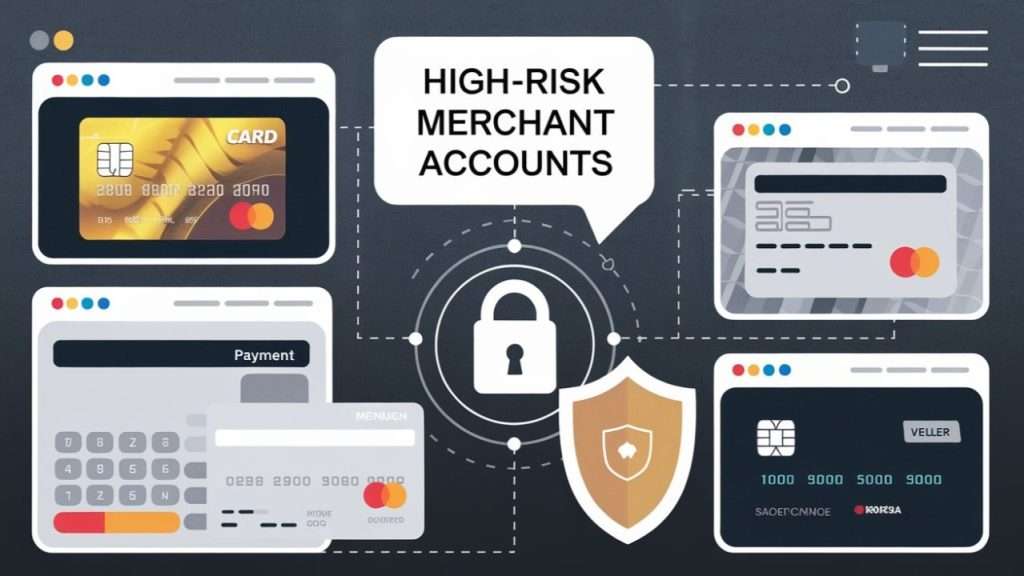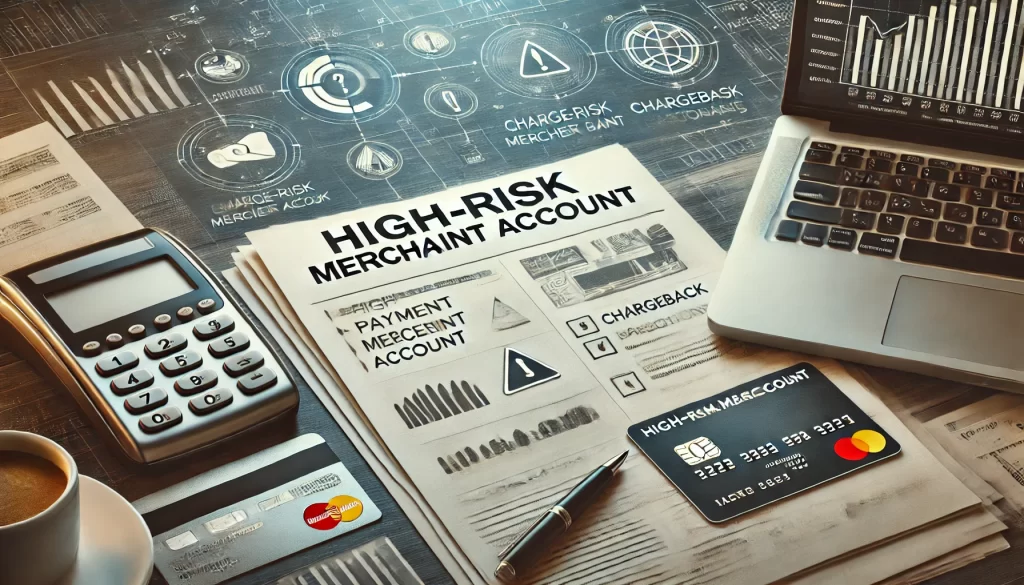AUTHOR : PUMPKIN KORE
DATE : 22/11/2023
Introduction

In today’s digital-first world, online payment gateways[1] play a crucial role in facilitating secure and seamless transactions for businesses and consumers alike. As the e-commerce landscape continues to evolve, so do the trends in payment technology. Businesses, especially those with high-risk profiles, need to stay ahead of emerging trends to ensure they can process payments securely while minimizing fraud and chargebacks. This article explores the current and upcoming trends in the payment gateway space, with a special focus on high-risk merchant accounts[2] and how they are shaping the future of digital payments.
Understanding Payment Gateways
Before diving into trends, it’s important to understand what a payment gateway is. A payment gateway is a technology that securely processes credit and debit card payments for online transactions[3]. It acts as a bridge between a business and its payment processor, encrypting sensitive information such as card details and ensuring the payment is authorized before the transaction is completed.
For businesses, choosing the right payment gateway is essential for ensuring fast, secure, and efficient transactions. This is especially true for high-risk merchants, who face additional challenges such as increased chargebacks, fraud, and stricter compliance requirements.
Key Trends in Payment Gateways
1. Rise of AI and Machine Learning in Fraud Detection
As cybercriminals[4] become more sophisticated, payment gateways are leveraging artificial intelligence (AI) and machine learning (ML) to detect and prevent fraud in real-time. These technologies analyze transaction patterns and customer behavior to identify anomalies that may indicate fraudulent activity. By using AI-driven fraud detection, businesses can minimize chargebacks, reduce fraud risks, and improve the overall security of online transactions.
For high-risk merchants, this trend is particularly important. High-risk industries such as gambling, adult content, and online pharmacies are often targeted by fraudsters due to the high volume of transactions. Implementing AI-powered fraud prevention tools can provide an extra layer of protection and help businesses comply with industry regulations.
2. The Shift Toward Cryptocurrency Payments
Cryptocurrency has been making waves in the payment gateway industry[5]. As digital currencies such as Bitcoin, Ethereum, and others gain mainstream acceptance, more businesses are integrating cryptocurrency payment options into their online payment systems. Cryptocurrencies offer fast and low-cost transactions, which can be particularly beneficial for international transactions.
For high-risk merchants, cryptocurrency provides an alternative to traditional payment methods, which may come with higher fees or additional scrutiny from financial institutions. With the added benefit of anonymity and decentralization, cryptocurrencies are appealing to merchants in industries that are often underserved by traditional financial services.
3. Integration of Biometric Authentication
Biometric authentication is another growing trend in the payment gateway space. This technology ensures that only the authorized user can complete a transaction, reducing the risk of fraud and identity theft. For high-risk merchants, biometric authentication can help meet regulatory requirements, such as those imposed by the Payment Services Directive 2 (PSD2) in Europe, which mandates strong customer authentication (SCA) for online transactions. This trend not only improves security but also builds consumer trust, which is essential for businesses in high-risk industries.
4. Contactless Payments and Mobile Wallets
Contactless payments, enabled by technologies like Near Field Communication (NFC), have surged in popularity over the past few years. Consumers appreciate the convenience of making purchases by simply tapping their card or mobile device on a payment terminal. This trend has only accelerated during the COVID-19 pandemic, as consumers seek safer, touch-free ways to complete transactions.

These digital wallets store payment information securely and enable fast, easy transactions on smartphones. For high-risk merchants, adopting contactless payments can help attract more customers, particularly those who value convenience and security. Mobile wallets also offer an additional layer of encryption, making transactions safer for both merchants and consumers.
5. Subscription Payment Models and Recurring Billing
Subscription-based services and recurring billing have seen a significant rise, thanks in part to the proliferation of streaming platforms, subscription boxes, and software-as-a-service (SaaS) offerings. Payment gateways are evolving to support these business models, offering features such as automated billing, easy upgrades or downgrades, and integrated invoicing. For high-risk merchants in subscription-based industries, the ability to manage recurring payments efficiently is crucial.
6. Global Payment Gateway Expansion
With e-commerce becoming a global phenomenon, businesses are looking for payment gateways that can process transactions in multiple currencies and offer localized payment methods. Cross-border transactions are expected to grow as more businesses expand into international markets. For high-risk merchants, expanding into international markets comes with its own set of challenges, such as compliance with local laws and managing fraud risks in different regions. However, global payment gateway solutions can help mitigate these challenges, enabling high-risk businesses to tap into new markets with confidence.
High-Risk Merchant Accounts: Key Considerations

What Is a High-Risk Merchant Account?
A high-risk merchant account is a type of payment processing account tailored to businesses that operate in industries with higher risks of fraud, chargebacks, or regulatory scrutiny. These industries include online gambling, adult entertainment, travel, and telemarketing. Because high-risk merchants are more likely to experience chargebacks, fraud, and other issues, payment processors often impose stricter requirements or higher fees on these accounts.
How to Manage a High-Risk Merchant Account
Managing a high-risk merchant account requires a proactive approach to minimize the impact of potential issues. Some best practices include:
- Implementing Strong Fraud Prevention Measures: Use AI and machine learning-powered fraud detection systems to monitor transactions for unusual activity.
- Maintaining Chargeback Prevention Protocols: Work with your payment gateway to set up chargeback alerts, dispute management, and prevention strategies.
- Ensuring Regulatory Compliance: Stay updated on the regulatory requirements that apply to your industry and ensure your payment processing practices are compliant.
- Building Customer Trust: Offer secure, transparent, and user-friendly payment options that reassure customers about the safety of their personal and financial information.
Conclusion
The payment gateway landscape is rapidly evolving, driven by technological advancements and changing consumer preferences. For high-risk merchants, staying abreast of these trends is essential to maintaining secure, efficient, and compliant payment processing systems. By adopting innovations such as AI-driven fraud detection, biometric authentication, and cryptocurrency payments, businesses can not only minimize risks but also enhance the customer experience and expand into new markets. As digital payments continue to grow, the ability to adapt to emerging trends will be a key factor in the long-term success of high-risk merchants.
FAQs
1. What makes a merchant account high-risk?
A high-risk merchant account is typically required for businesses in industries that have a higher likelihood of fraud, chargebacks, or financial instability. Examples include online gambling, adult content, travel, and telemarketing.
2. Can a high-risk merchant get a regular payment gateway?
While it may be more challenging, high-risk merchants can still obtain a payment gateway, though they may face higher fees or stricter terms. Specialized payment processors that cater to high-risk industries are available.
3. What are the benefits of using AI in payment gateways?
AI helps improve fraud detection, reduce chargebacks, and enhance transaction security by analyzing patterns and behaviors in real-time. For high-risk merchants, this can be particularly valuable in minimizing risks and improving compliance.
4. How can high-risk merchants minimize chargebacks?
High-risk merchants can minimize chargebacks by implementing robust fraud prevention tools, maintaining clear and transparent refund policies, and using transaction monitoring systems to identify potential issues early.
5. Are cryptocurrency payments secure?
Cryptocurrency payments are secure when processed through a reputable payment gateway. However, merchants must ensure they comply with applicable regulations and handle cryptocurrency transactions responsibly.





